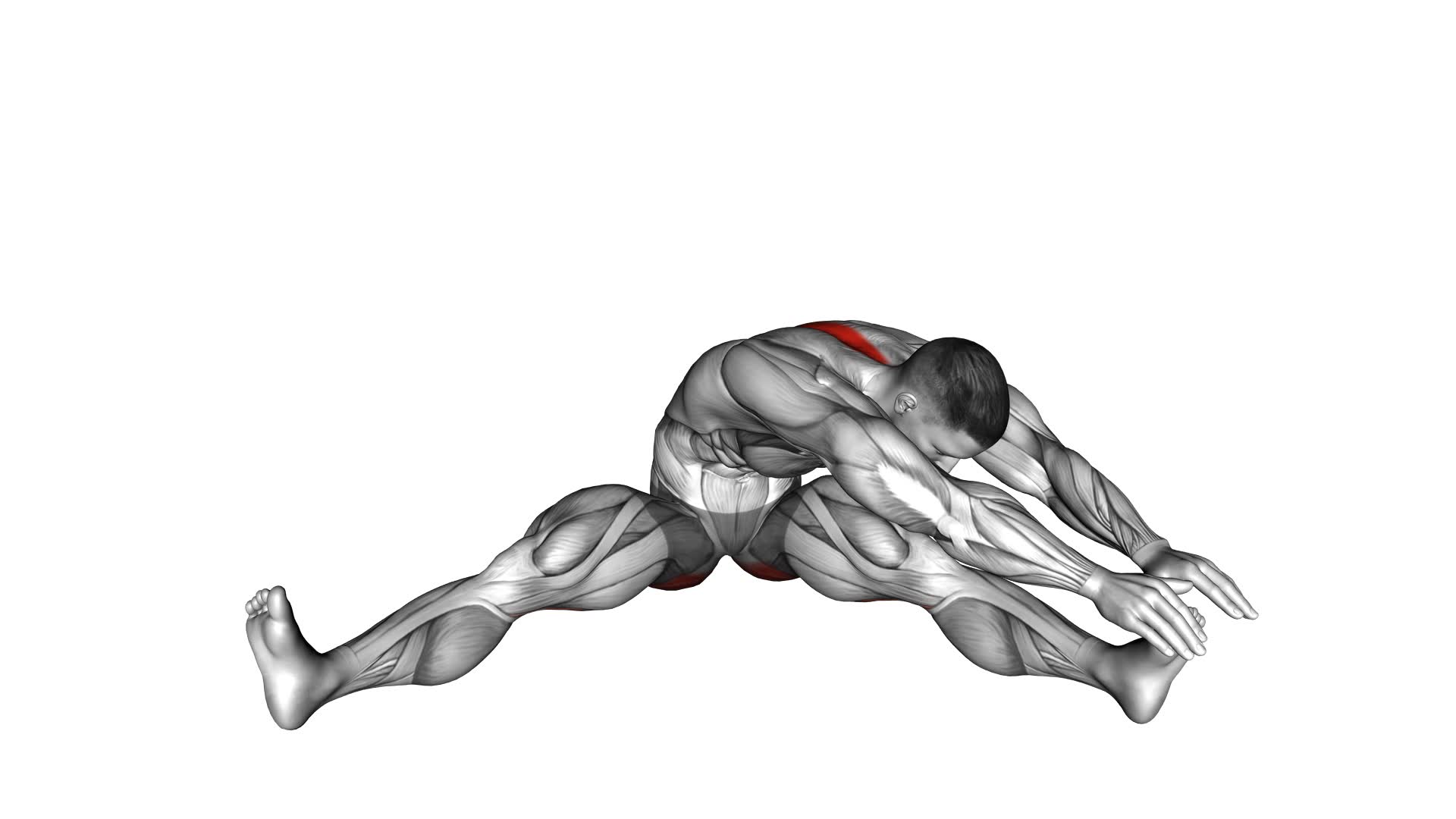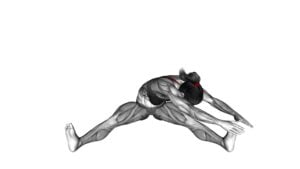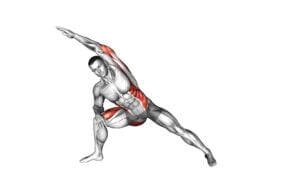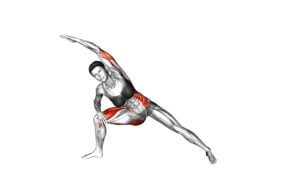Seated Wide Angle Pose Sequence – Video Exercise Guide & Tips

Are you looking to improve your flexibility and strengthen your lower body? Look no further than the Seated Wide Angle Pose sequence.
Watch This Exercise Video
In this video exercise guide, you'll find step-by-step instructions, modifications, and variations to help you master this pose.
With proper alignment and form, you can reap the benefits of increased hip mobility and a calm mind.
Don't miss out on this informative and detailed guide to the Seated Wide Angle Pose sequence.
Key Takeaways
- Seated Wide Angle Pose improves posture, flexibility, and strengthens the spine.
- It targets the lower back and spine muscles while promoting relaxation and reducing stress.
- Hip flexibility and alignment are important in this pose, so incorporating hip openers and seated forward folds into your routine is beneficial.
- Modifications and props can be used to support proper alignment and deepen the stretch, but it's important to listen to your body and never push beyond your limits.
Benefits of Seated Wide Angle Pose
You can experience a multitude of benefits from practicing Seated Wide Angle Pose. This yoga pose is known for its ability to improve posture and increase flexibility. By regularly engaging in this pose, you can work towards a stronger, more aligned spine and better overall posture.
Seated Wide Angle Pose requires you to sit with your legs spread wide apart and your feet flexed. As you fold forward, you stretch your inner thighs, hamstrings, and groins, which helps to increase flexibility in these areas. The pose also targets the muscles in your back, including your lower back and spine, helping to improve their strength and flexibility.
In addition to physical benefits, Seated Wide Angle Pose can also have a positive impact on your mental well-being. This pose encourages deep breathing and relaxation, which can help to reduce stress and anxiety. It can also help to calm the mind and improve focus and concentration.
Preparing for the Seated Wide Angle Pose
To prepare for the Seated Wide Angle Pose, it's important to focus on hip flexibility and alignment. You want to ensure that your hips are able to open comfortably and that your spine is aligned properly.
If you're a beginner, there are modifications that can be made to make the pose more accessible, such as using props or sitting on a folded blanket to elevate your hips.
Hip Flexibility and Alignment
To prepare for the Seated Wide Angle Pose, begin by improving your hip flexibility and alignment. This will allow you to comfortably and safely perform the pose.
One way to increase hip flexibility is by incorporating hip openers into your routine. These exercises target the muscles surrounding the hips and help to release tension and tightness. Examples of hip openers include the pigeon pose and the butterfly pose.
Additionally, seated forward folds can also help improve hip flexibility and alignment. These stretches focus on lengthening the muscles in the back of the legs and hips, allowing for a greater range of motion in the hips.
Incorporating these exercises into your practice will help you prepare for the Seated Wide Angle Pose and ensure proper alignment in your hips.
Modifications for Beginners
For beginners preparing to perform the Seated Wide Angle Pose, it's important to start with basic modifications that focus on hip flexibility and alignment.
Chair modifications can be incredibly helpful for beginners who may struggle with sitting upright on the floor. You can use a chair to sit on while performing the pose, which provides support and stability. This modification allows you to gradually work on opening up your hips and improving your flexibility.
Another modification you can try is using blocks. Placing blocks under your sitting bones can elevate your hips and make it easier to maintain proper alignment during the pose. This modification is especially useful for beginners who may have tight hamstrings or limited flexibility.
Remember to listen to your body and modify the pose as needed to ensure a safe and effective practice.
Step-by-Step Instructions for Seated Wide Angle Pose
Sit on the floor with your legs wide apart in Seated Wide Angle Pose. This pose is great for stretching your inner thighs, hamstrings, and groins.
Follow these step-by-step instructions to ensure proper alignment and maximize the benefits of the pose:
- Start by sitting tall, lengthening your spine, and engaging your core muscles.
- Flex your feet and press your thigh bones firmly into the ground to activate the leg muscles.
- Inhale and extend your arms straight out in front of you, parallel to the ground. Keep your palms facing down.
- As you exhale, hinge forward from your hips, maintaining a flat back. Walk your hands forward along the floor, reaching as far as you comfortably can without straining.
To modify the pose for beginners, you can use props such as a folded blanket or bolster to support your torso. Place the prop under your hips to elevate them slightly and reduce the strain on your lower back. If your hamstrings are tight, you can also bend your knees slightly.
Remember to listen to your body and modify the pose as needed. With regular practice, Seated Wide Angle Pose can help improve flexibility and increase circulation in your lower body.
Modifications and Variations for Seated Wide Angle Pose
To enhance your practice of Seated Wide Angle Pose, there are several modifications and variations you can incorporate.
Props such as blankets, blocks, or bolsters can provide better alignment and support, allowing you to maintain proper form and avoid strain.
Additionally, focusing on stretching your hamstrings and hips can be achieved by adjusting the angle of your legs or using a strap to deepen the stretch.
Props for Better Alignment
Achieve better alignment in Seated Wide Angle Pose by incorporating props that support and enhance your posture. Here are four props that can help you achieve better alignment in this pose:
- Bolster: Place a bolster or a folded blanket under your sit bones to elevate your hips and create a slight tilt forward. This helps to lengthen the spine and prevent rounding of the lower back.
- Blocks: Position blocks on either side of your hips and rest your hands on them. This provides support and stability, allowing you to maintain an upright position.
- Strap: If you have tight hamstrings or limited flexibility, use a strap around your feet and hold onto it with your hands. This allows you to maintain a flat back and elongate your spine.
- Blanket: Roll up a blanket and place it under your knees to provide support and prevent strain on the knees and hips.
Stretching Hamstrings and Hips
Use props and modifications to effectively stretch your hamstrings and hips in Seated Wide Angle Pose.
Hamstring stretches and hip opening exercises are essential for increasing flexibility and mobility in these areas.
To deepen the stretch in your hamstrings, you can use a strap or towel around your feet and gently pull yourself forward, maintaining a straight back. This will help target the muscles in the back of your thighs.
For a more intense hip opening, you can place blocks or bolsters under your knees to elevate them. This modification allows for a greater stretch in the hips and groin.
Remember to always listen to your body and never push yourself beyond your limits.
Regular practice of these modifications will gradually improve your hamstring flexibility and hip mobility.
Tips for Proper Alignment and Form
Ensure proper alignment and form by positioning your legs wide apart and keeping your spine straight. This will help you get the most out of your seated wide angle pose and prevent strain or injury. Here are some tips to help you achieve proper alignment and form:
- Use yoga props: If you find it difficult to keep your spine straight, use yoga props such as blocks or blankets to support your torso. Place them under your hands or sit on a folded blanket to elevate your hips and make it easier to maintain a straight spine.
- Engage your core: To keep your spine straight, engage your core muscles by gently drawing your belly button towards your spine. This will help stabilize your torso and prevent slouching.
- Relax your shoulders: Roll your shoulders back and down, away from your ears. This will help open up your chest and create space for your breath.
- Lengthen your spine: Imagine a string pulling the crown of your head towards the ceiling. Lengthening your spine will create more space in your torso and allow for a deeper stretch in your hips and hamstrings.
Common Mistakes to Avoid in Seated Wide Angle Pose
To ensure proper alignment and form in your seated wide angle pose, it's important to be aware of common mistakes to avoid.
One common mistake is rounding the spine. When you round your spine, you compromise the integrity of the pose and put unnecessary strain on your lower back. To avoid this, make sure to sit up tall and maintain a straight spine throughout the pose.
Another mistake to avoid is collapsing the chest. When you collapse your chest, you limit the opening of the hips and the stretch in the inner thighs. To prevent this, actively engage your core and lift your chest towards the ceiling.
It's also important to avoid forcing your legs apart. Instead, allow your hips to naturally open up by using props such as blocks or blankets to support your knees.
Lastly, be mindful of your breath. Holding your breath or shallow breathing can lead to tension and discomfort. Remember to take deep, steady breaths throughout the pose to help you relax and find a deeper stretch.
Frequently Asked Questions
How Long Should I Hold the Seated Wide Angle Pose?
When practicing yoga, it's important to know how long to hold each pose. In the case of the seated wide angle pose, the duration can vary depending on your level of comfort and experience.
Holding the pose for at least 30 seconds to a minute can provide benefits such as stretching the inner thighs, improving flexibility, and calming the mind.
Can I Do the Seated Wide Angle Pose if I Have Lower Back Pain?
If you have lower back pain, it's important to be cautious when practicing the seated wide angle pose. While it can be beneficial for stretching the inner thighs and opening the hips, modifications may be necessary to protect your lower back.
Avoid rounding your spine and use props like a bolster or folded blanket to support your back.
Listen to your body and stop if you feel any discomfort.
Consult with a yoga instructor or healthcare professional for personalized guidance.
Is It Safe to Practice the Seated Wide Angle Pose During Pregnancy?
During pregnancy, practicing the seated wide angle pose can be safe and beneficial for you. This pose helps to open the hips, stretch the inner thighs, and relieve tension in the lower back.
However, it's important to make modifications to ensure your comfort and safety. You can use props like blankets or blocks to support your back and sit on a folded blanket for added comfort.
Always listen to your body and consult with your healthcare provider before starting any new exercise routine during pregnancy.
Can I Use Props Such as Blocks or Bolsters to Support My Practice of the Seated Wide Angle Pose?
Yes, you can definitely use props such as blocks or bolsters to support your practice of the seated wide angle pose. Props can provide additional stability and help you maintain proper alignment. Placing blocks under your hands or using bolsters to support your knees can make the pose more accessible and comfortable.
These modifications can be especially helpful if you have tight hips or limited flexibility. Props allow you to adapt the pose to your individual needs and gradually work towards a deeper stretch.
How Can I Deepen My Stretch in the Seated Wide Angle Pose?
To deepen your stretch in the seated wide angle pose, there are a few modifications you can try.
First, you can place a bolster or folded blanket under your hips to elevate them and provide more support. This will help you maintain a straight spine and allow for a deeper stretch.
Additionally, you can use blocks under your hands to bring the floor closer to you, allowing for a deeper forward fold.
Practicing this pose regularly can improve flexibility, strengthen the inner thighs, and stimulate the abdominal organs.
Conclusion
In conclusion, the Seated Wide Angle Pose is a beneficial exercise that helps improve flexibility, strength, and posture.
By following the step-by-step instructions and making necessary modifications, you can safely and effectively practice this pose.
Remember to focus on proper alignment and form to avoid common mistakes.
By incorporating the Seated Wide Angle Pose into your workout routine, you can experience the many benefits it offers for your overall well-being.

Author
Years ago, the spark of my life’s passion ignited in my mind the moment I stepped into the local gym for the first time. The inaugural bead of perspiration, the initial endeavor, the very first surge of endorphins, and a sense of pride that washed over me post-workout marked the beginning of my deep-seated interest in strength sports, fitness, and sports nutrition. This very curiosity blossomed rapidly into a profound fascination, propelling me to earn a Master’s degree in Physical Education from the Academy of Physical Education in Krakow, followed by a Sports Manager diploma from the Jagiellonian University. My journey of growth led me to gain more specialized qualifications, such as being a certified personal trainer with a focus on sports dietetics, a lifeguard, and an instructor for wellness and corrective gymnastics. Theoretical knowledge paired seamlessly with practical experience, reinforcing my belief that the transformation of individuals under my guidance was also a reflection of my personal growth. This belief holds true even today. Each day, I strive to push the boundaries and explore new realms. These realms gently elevate me to greater heights. The unique combination of passion for my field and the continuous quest for growth fuels my drive to break new ground.



